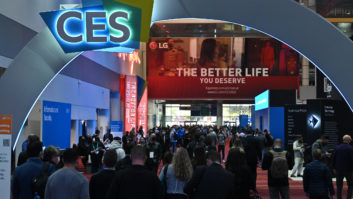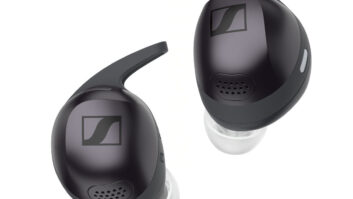Here we go again.
A/V specialists will have to reinvent themselves one more time to cope with significant changes in technology and retail distribution, outgoing PARA executive director Deborah Smith told dealers at PARA’s 25th annual management conference.
These changes will “displace the low end of our custom and retail businesses,” Smith warned the conference’s 440 attendees.
In past years, audio specialists reinvented themselves by integrating video into their mix, then they added lifestyle home theater settings to complement their sound rooms, Smith said. Most recently, they’ve diversified into custom installation. Many specialists, however, didn’t survive the past quarter century, and most often “it was those dealers resistant to change,” she lamented.
Now, even though the economy is springing back, Smith said, dealers are feeling uneasy and are asking, “What is going on out there in the world of technology and consumer electronics?” The “sluggish economy” had “masked” many of the changes, she said, but as the economy improves, “things are going to change, and fast.”
Specialists must respond decisively to the changes, which include Best Buy’s repositioning as a step-up dealer, Microsoft and Intel “hard at work” converging IT and A/V products in the home, and cable and satellite companies “vying to get into our space,” she said.
To these changes, PARA president John Flanner added the arrival of Internet and PC retailers into the home A/V market and the popularity of home PC networking, which specialists are trying to integrate into their product mix.
Another change that dealers are digesting is PARA’s decision to become a division of CEA (see TWICE, April 19, p.1). As a division, PARA will maintain a board elected by dues-paying PARA retail members.
Many PARA members said they saw benefits to this particular change as long as PARA maintains its identity. CEA brings financial resources and significant research capabilities to PARA, said Brett Ringeisen of Vero Beach, Fla.’s Audio House. As long as CEA “takes a hands-off approach and benefits from PARA’s input,” he said, “it’s a win situation.”
Bryan Buchanan, president of Stokes Homes and Car Entertainment in Logan, Utah, called the merger “very positive” and said a “solid board of directors” won’t let PARA lose its identity when it becomes a CEA division.
As part of CEA, Flanner said, PARA will “strengthen the voice” of specialty dealers in the industry, making it possible for them to present their needs directly to manufacturers. CEA will also create a special educational account of “several hundred thousand dollars to fund new education initiatives directed by the PARA broad,” he said.
Presumably, the educational effort will include IT training. “IT has to become one of our competencies” because the A/V and IT industries are converging, Flanner told TWICE.
In fact, an Intel executive told attendees during a roundtable to be prepared for a “big blurring between what is an IT- and CE-based product.” Consumers “want to move content around the home,” explained Intel strategic programs director Donald Whiteside. As a result, he said, more products — such as PCs, CE equipment and set-top boxes — “will speak to one another” and “must be compatible.” He advised dealers to “steer your customers to these products, which foster convergence in the home.”
CE-IT convergence will help dealers “broaden their businesses” and “help you sell more displays in more rooms,” added Bill Mannion, channel marketing director for Microsoft’s Windows consumer product marketing group. The planned fall launch of Media Center PC “extenders,” he said, will enable TVs to access content from networked Media Center PCs, whose user interface will appear on the TV. Extenders will retail for less than $300 and eventually will be integrated into TVs and PCs, he said.
“I routinely sell PCs,” Lydecker said, “and we do make money on computers.” When you install structured wiring and IP security cameras, he continued, “clients don’t have the time to figure out what they need and turn to you.”
Another potential change in the status quo is coming from advances in wireless-network technologies, including ultrawideband (UWB) and ZigBee, Tweeter’s Herschmann said during another seminar. “What will the custom-installation business look like when there are no more wires to pull?” he asked.
Even if technology and distribution are changing rapidly, one thing hasn’t changed: the AV specialists’ core baby boomer market, said Smith and other presenters. “Wealth is concentrated in people over 50,” said Herschmann. Author and consultant Robert Sutton agreed. Baby boomers are “where most of the money is and who will have the most time [to use specialists’ products].”
Smith cited a “gigantic opportunity” among baby boomers who get divorced or whose kids have graduated college. Even baby boomers whose kids are living in college dorms are key prospects, she said, because the kids aren’t around to help them with their PCs. Custom installers, she stressed, can help these consumers with their home networking and PC issues. “We can do that better than anyone,” she said.
Nonetheless, Sutton also advised dealers to attract the younger generation, in part by hiring younger people. Specialists were also advised to launch a high-end gaming strategy to broaden their customer base.













